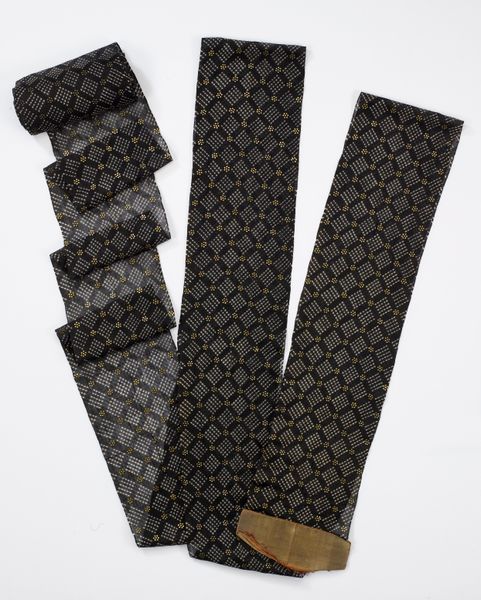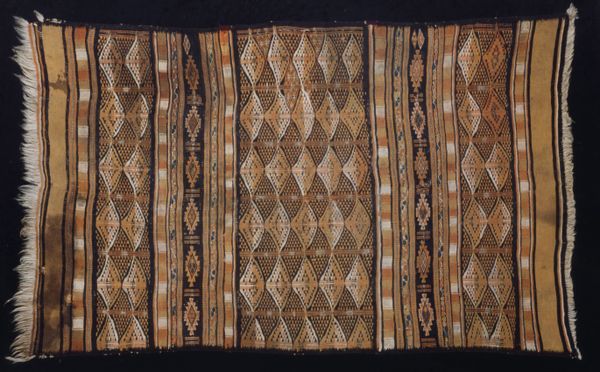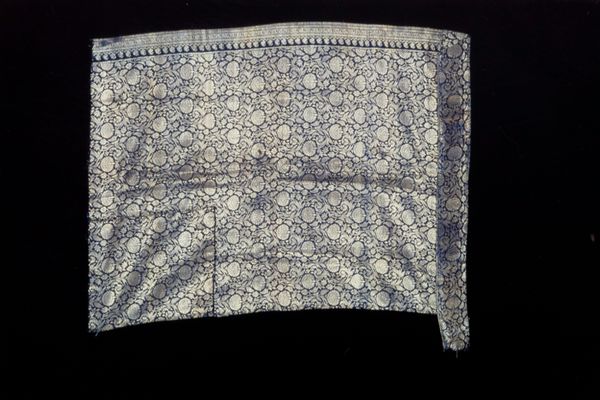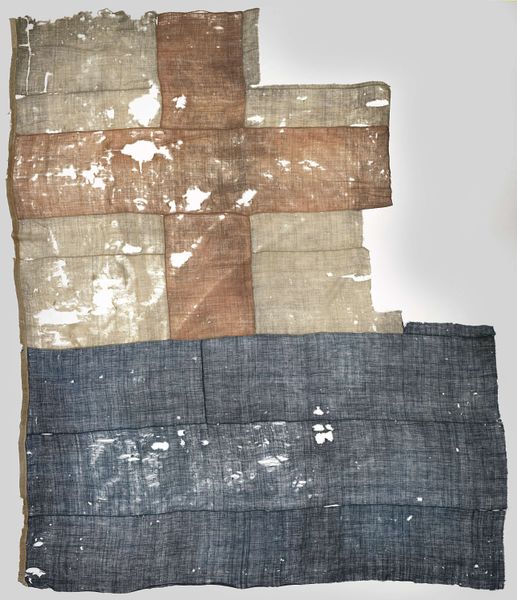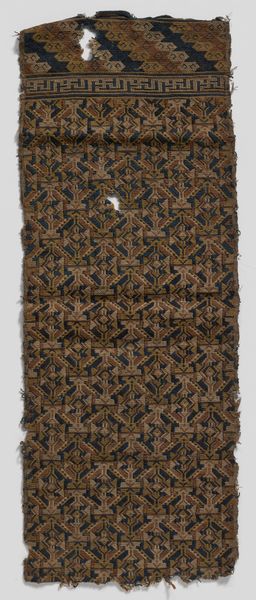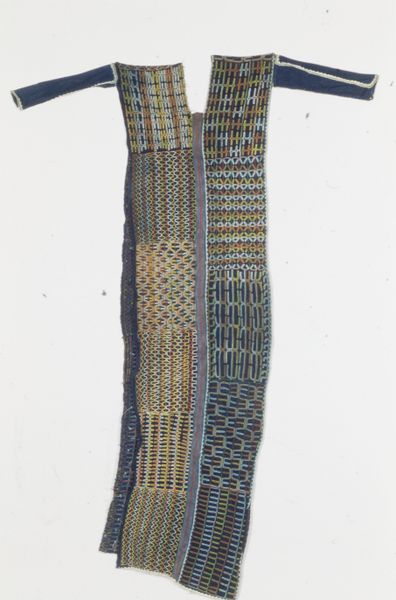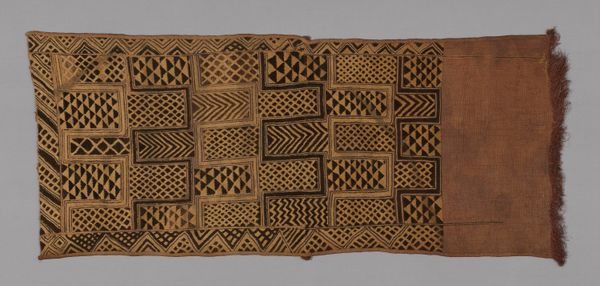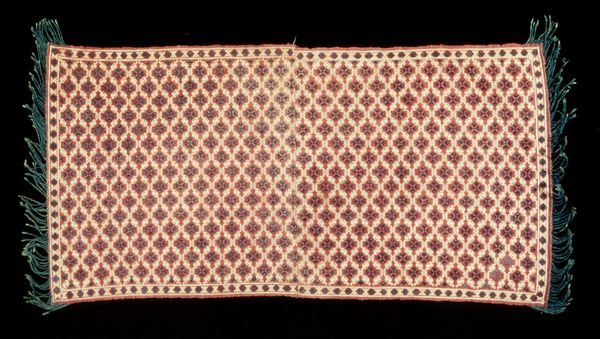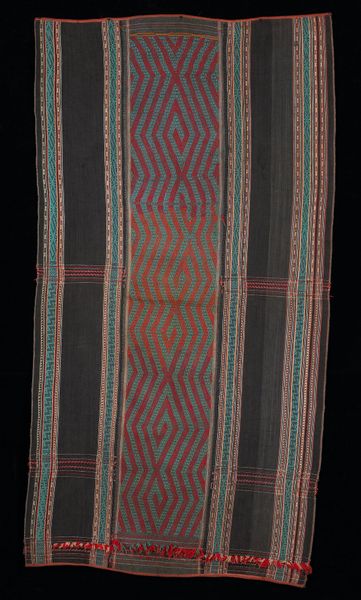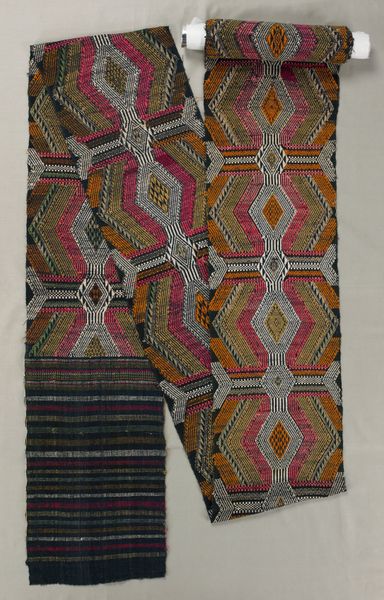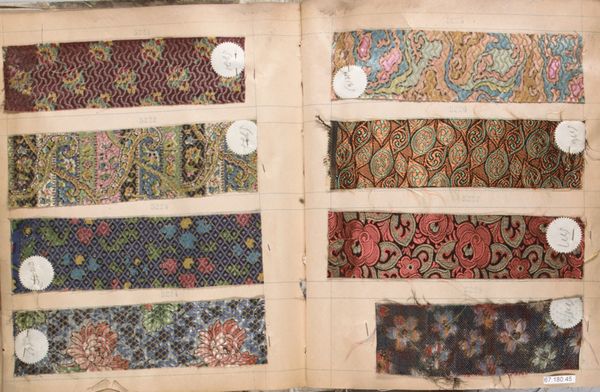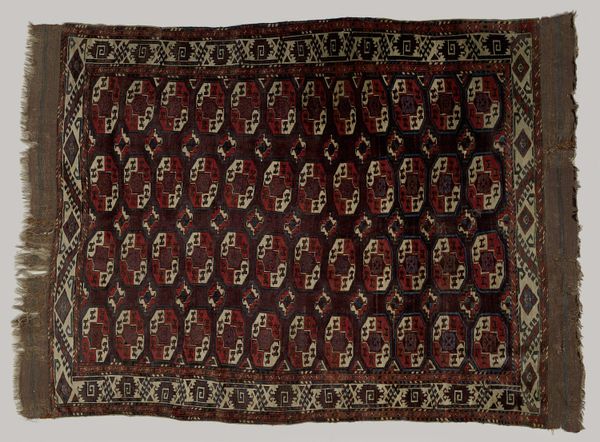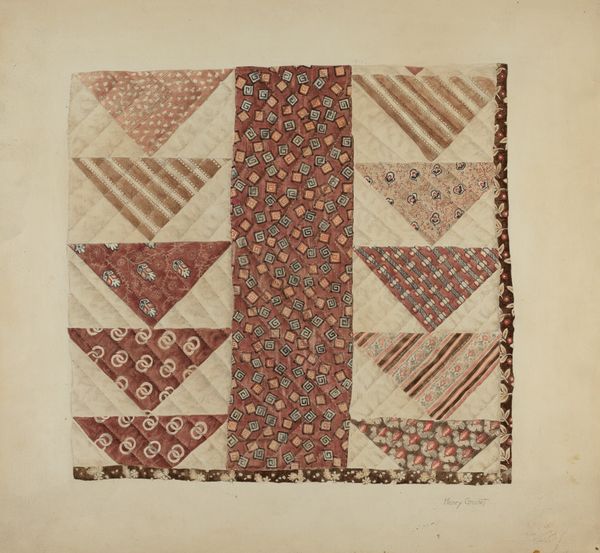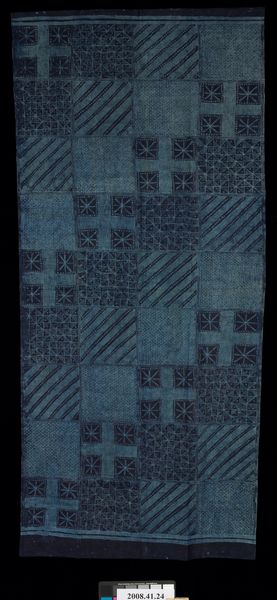
textile, cotton
#
natural stone pattern
#
pattern used
#
pattern
#
textile
#
geometric pattern
#
hand-embroidered
#
geometric
#
repetition of pattern
#
regular pattern
#
pattern repetition
#
cotton
#
islamic-art
#
textile design
#
beaded
#
layered pattern
Dimensions: 700 x 9 9/16 in. (1778 x 24.29 cm) (approximate)
Copyright: Public Domain
Curator: Before us we have a "Man's turban (Pagri)," dating from the 19th century. It is held in the collection of the Minneapolis Institute of Art. Editor: At first glance, it feels surprisingly subdued, despite the intricate pattern. It evokes a sense of quiet dignity, maybe because the colours are so muted. Curator: Yes, let’s discuss that pattern! We know that it's made with cotton and showcases what appears to be detailed, hand-embroidered beadwork throughout. It would be useful to study its weave structure and the labor involved to create such precise geometric motifs and layered design, since the textile’s construction relates closely with its purpose. Editor: I am struck by the patterns themselves. The way they shift and evolve along the length of the fabric speaks volumes. There is a sense of history embedded in it. Do you see how the eye is drawn through different patterns, but they still maintain that subtle color palette to maintain cohesion. There are diamond motifs mixed with what looks to be like natural and organic elements – flowers or seeds perhaps? Curator: The pattern's consistency throughout definitely draws the eye, and you rightly point out its blend of abstract geometry with suggestions of the natural world. Its design also likely draws upon an established tradition of textile production. Editor: Precisely. And I think, culturally, a turban is far more than simply headwear, isn't it? This particular textile embodies not just aesthetics, but notions of identity, faith and maybe social standing, don't you agree? It is clearly communicating something about its wearer. Curator: I completely agree that turbans are a very interesting material component for study. The ways these patterns change would suggest the influence of trade. This could reflect something of not just identity, as you stated, but also influence from far and wide. It’s important to consider how those cultural elements come together, the raw materials used in order to make textiles which serve multiple social purposes. Editor: I see your point about its interconnectedness with trade! I think looking at this turban it carries with it, it hints at broader narratives around belief and cultural significance – which now makes me see those motifs differently. Curator: This careful reflection, this emphasis on craftsmanship, has been important to deepen my insight, also.
Comments
No comments
Be the first to comment and join the conversation on the ultimate creative platform.
